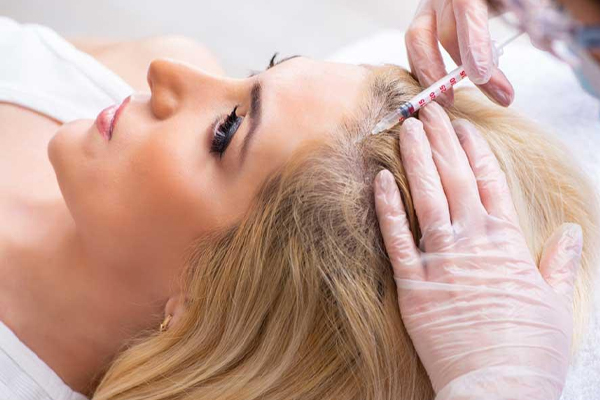PRP
PRP Therapy is a minimally invasive cosmetic procedure that uses the patient’s own blood to stimulate healing and rejuvenation in the skin, hair, and other tissues. It is often used in facial, hair, and joint treatments.
Uses of PRP Therapy
-
Facial Rejuvenation:
- Reduces wrinkles, fine lines, and improves skin texture.
- Stimulates collagen production for a more youthful appearance.
-
Hair Restoration:
- Promotes hair growth by nourishing hair follicles and improving scalp circulation.
-
Joint and Sports Injury Treatment:
- Used to treat joint pain and sports injuries by promoting tissue repair and reducing inflammation.
-
Acne Scar and Skin Texture Improvement:
- Helps in reducing scars and smoothing out uneven skin textures.
Benefits of PRP Therapy
- Natural, minimally invasive procedure with minimal side effects.
- Enhances healing and regeneration of skin, hair, and tissues.
- Provides long-lasting results with little downtime.
- Reduces signs of aging and improves overall skin quality.
Procedure Overview
-
Consultation:
- A medical professional reviews the patient’s medical history and skin condition.
-
Blood Collection:
- A small amount of blood is drawn from the patient.
-
Processing:
- The blood is centrifuged to separate the plasma (rich in platelets).
-
Injection:
- The concentrated PRP is injected into the targeted areas.
Ideal Candidates for PRP Therapy
- Individuals looking for non-surgical, natural solutions for skin rejuvenation or hair restoration.
- Those with mild to moderate skin concerns, hair loss, or joint pain.
- Healthy individuals with no underlying medical conditions affecting healing or platelet function.
Results
- Facial Rejuvenation: Results are visible after 3-6 sessions spaced 4-6 weeks apart.
- Hair Restoration: Progressive hair growth is seen after 4-6 sessions.
- Skin Texture: Improved skin quality within 2-3 months post-treatment.
Recovery Process
- Mild redness, swelling, or discomfort for 1-2 days post-treatment.
- Minimal downtime, allowing for a quick return to normal activities.
Risks and Complications
- Common Risks:
- Temporary redness, swelling, and mild discomfort.
- Rare complications include infection or allergic reactions.



